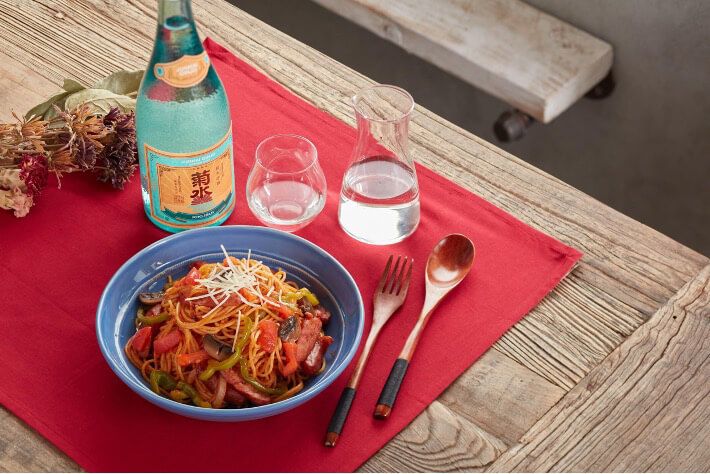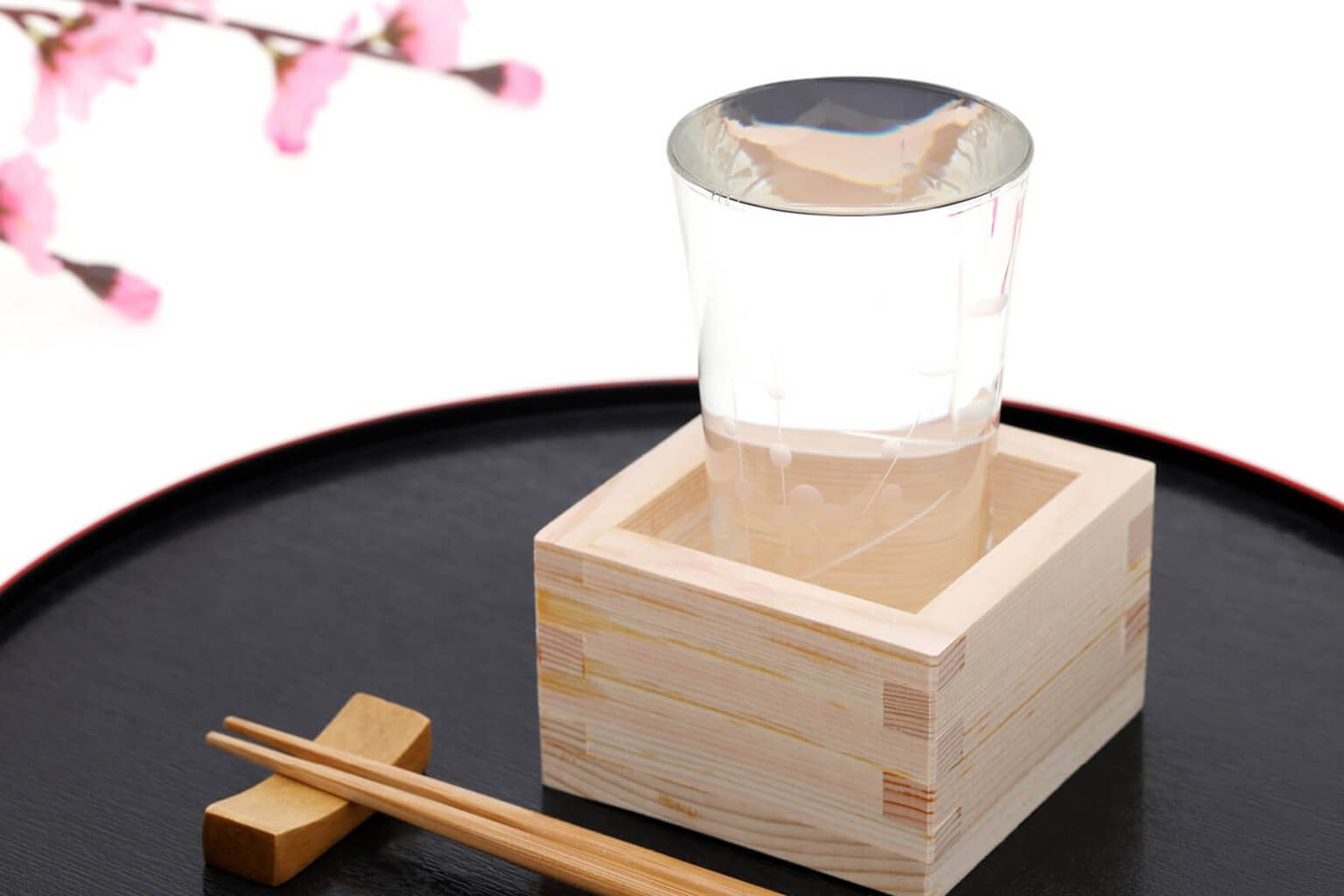If you are a kimoto sake fan, you might have come across Daishichi Brewing Company at some point. They are known for brewing sake strictly with traditional kimoto methods. Their 10th generation kuramoto (brewery president), Hideharu Ohta, shares his vision of Daishichi as a model of sake without limitation.
Mimi (Tippsy Staff): Daishichi is known for brewing sake with the traditional kimoto method. What are some unique things about your brewery?
Hideharu: The first thing that comes to mind is that we have respect for the rice we use to brew sake. In other words, we don’t consider rice as a means, but a purpose. I believe that without paying sincere respect to rice, you won’t be able to bring out the best potential from it. That’s why it is out of the question for us to polish rice excessively or just to reach an [ideal] polishing rate. We are proud that we’ve invented the super flat rice polishing (cho henpei seimai) method which draws out the best part of rice. Using the kimoto method is also to efficiently bring umami out of rice. To Daishichi, sake rice is not an object to be milled, but a thing that has potential within to be brought out.
Sachiko (Tippsy Staff): I know that kimoto is an old style, but I imagine that over the years the process might change little by little. So I wanted to ask if that’s the case at Daishichi as well. Do you think there’s a difference between the kimoto you’re making today compared to the one you were making decades before?
Hideharu: When I first joined Daishichi, there were only a small number of breweries making kimoto sake. In terms of placement in the market, kimoto sake was being sold as a sake made in a traditional way not seen much anymore. But rather than leave it as a nostalgic novelty, I saw the potential to make sake that modern methods couldn’t. So I teamed up with the reknowned toji Katsuji Ito to try and find new ways to push the limits of kimoto sake making.
Mimi: What was the journey like?
Hideharu: Well, I think the most challenging part was trying to decide what exactly a junmai daiginjo kimoto sake, like Horeki, should be like. There was nothing to model it in the market at the time, but I felt like it’d be missing the point if we had tried to model it after a daiginjo made by the modern sokujo method. So I thought Daishichi had a role to play in creating a daiginjo kimoto that would serve as a model to other kimoto breweries.
But there was a lot of trial and error to get there. We actually didn’t sell the sake we made during the first five years of this trial process, storing it in tanks instead. It wasn’t until 1989 that toji Ito and Daishichi were happy with the resulting sake. It had the strength of a kimoto but the floral aroma of a daiginjo. As for the sake we stored in the tanks, we aged it for 10 to 20 years and sold it as a ginjo koshu (aged sake) that had its own charms. But those are the things we went through with our kimoto to get where we are today.
Sachiko: What an amazing story. Thank you.
Mimi: As the 10th generation kuramoto (brewery president), you’ve made an effort to strengthen your presence overseas. Are there any strategies or things you’ve had to change or keep in mind when bringing sake to international consumers?
Hideharu: Daishichi has always prioritized intrinsic values when making sake. When thinking about our customers overseas, this thought comes to mind: “Don’t push Japanese values onto non-Japanese customers, but rather let them realize the value naturally.” And really this applies not just to our international customers, but our past, present and future customers, regardless of where they’re from. There is something that all these groups value, and if we strive for those things, I think we can’t go wrong.
Mimi: What do you mean by that exactly?
Hideharu: For example, when we first started trying to sell our sake abroad, the trend in Japan at the time was to make light and dry sake. Fresh tasting sake was also trendy. But if you think about it, wineries around the world would never describe their wine as light like water or freshly pressed. It just wouldn’t feel like any value has been added to the sake. Being able to describe your wine as bold and rich is really something that a winemaker could be proud of. And since my grandfather’s time at Daishichi, we’ve strived to make sake that’s both bold and refined.
Hideharu: Making sake that’s light and refined is relatively easy. Making a sake that is bold but is rough around the edges is also relatively easy. But making a sake that’s both bold in flavor but refined is difficult. That’s why customers are moved when they come across a product that brings two seemingly opposing qualities together. And that’s why we’ve made our goal to make products like this.
I think time is a universal way to add value to a product. It’s impossible to make a five-year aged sake overnight, so the time spent to mature the sake adds value to it. Of course, the sake also has to be able to age well. It’d be pointless if the quality of the sake degraded over the maturation period, so we also strive to make sake that can hold up against the effects of time.
Finally, another thing that’s valued around the world is a product in which a craftsmen’s experience and skill has been poured into, and that craftsmanship is another thing that Daishichi has valued for a long time. Whether you’re from Japan or not, the value of good craftsmanship is something that knows no borders.
Mimi: Speaking of craftsmanship, “Myoka Rangyoku” has a beautiful bottle that really challenges the notion of what a sake bottle typically looks like. I read that it was created for your “Magnificent Sake Project.” Could you share a little more about the background behind the project?
Hideharu: Well, at the time we started the project, the common belief was that getting the gold prize at the Annual Japan Sake Awards was the pinnacle of the sake industry. It’s very competitive, so winning the gold prize is a testament to the skill of the brewery. But since it’s an official competition, you can’t enter just any sake. There’s a very small target that you have to hit in terms of style. So if you can do that, you can get the gold prize. But that doesn’t allow for breweries to think about what style suits them best.
The Awards requires breweries to enter sake brewed that year before May. So unless your sake peaks in May, it’s very difficult to win the gold prize. I think this consequently creates a glass ceiling for sake quality. It limits the potential of what sake can be to just the sake that can win a gold prize, which typically have characteristics like being smooth, delicate, easy to drink and won’t overpower your food. Sake that are characterized with those words, in my opinion, wouldn’t be able to compete with full-bodied wines that are respected around the world.
Hideharu: So we wanted to make sake that didn’t fit into that narrow description of “good.” One that was full-bodied and deserving of the title “Magnificent.” We thought that kind of sake should be the pinnacle of sake. So we rethought our raw materials and our processes, and in doing so came to the realization that we wouldn’t reach the pinnacle of sake by artificially controlling the sake-making process and removing all of the “bad” parts, but by harnessing the wealth that natural processes could provide.
We also didn’t want to create a sake that peaked the spring of the year it was made, but rather one that continued to mature and reach even higher peaks as time went on. So “Myoka Rangyoku” was another challenge that took several years of trial and error before we had a product we were satisfied with. We started the “Magnificent Sake Project” in 2000, coinciding with the new millennium. And with that, we decided we would no longer participate in the Annual Japan Sake Awards, which brings us to where we are today.
Mimi: What a cool, moving story! From the bottle design to the taste, even the sound that it makes when you pour sake, you can really see how it embodies the work to create a unique and magnificent sake that only Daishichi could make. For the next question, are there any food pairings or ways to drink that you’d like to suggest to our members here in the US?
Hideharu: For “Minowamon,” the most popular sake in the US, I’d recommend scallops or ama ebi (sweet shrimp)—seafood that has a subtle sweetness. And because lactic acid fermentation occurs when making kimoto sake, it also pairs well with buttery and creamy foods. So dishes that are sautéed in butter or have a clarified butter sauce are great matches. Finally, duck also pairs very well with “Minowamon.”
For “Kimoto” Classic, I’d recommend drinking it as you would a red wine, so at room temperature rather than chilled. And as such, it pairs well with heavier, stronger flavored foods like beef or spicy dishes. It also pairs well with hard cheeses.
Mimi: What does sake mean to you?
Hideharu: Have you noticed that all of Daishichi’s sake have names? We don’t reference them as “Daishichi’s junmai” or “Daishichi’s daiginjo,” but rather by names that we give them. Each of them has their own distinct character, just like people do. And each of them fit into a different lifestyle. So to answer the question, to Daishichi, sake is a partner to food, but it might be even more fitting to say they’re a partner you’re sharing a meal with. To me, sake is like a friend you have over for dinner.















